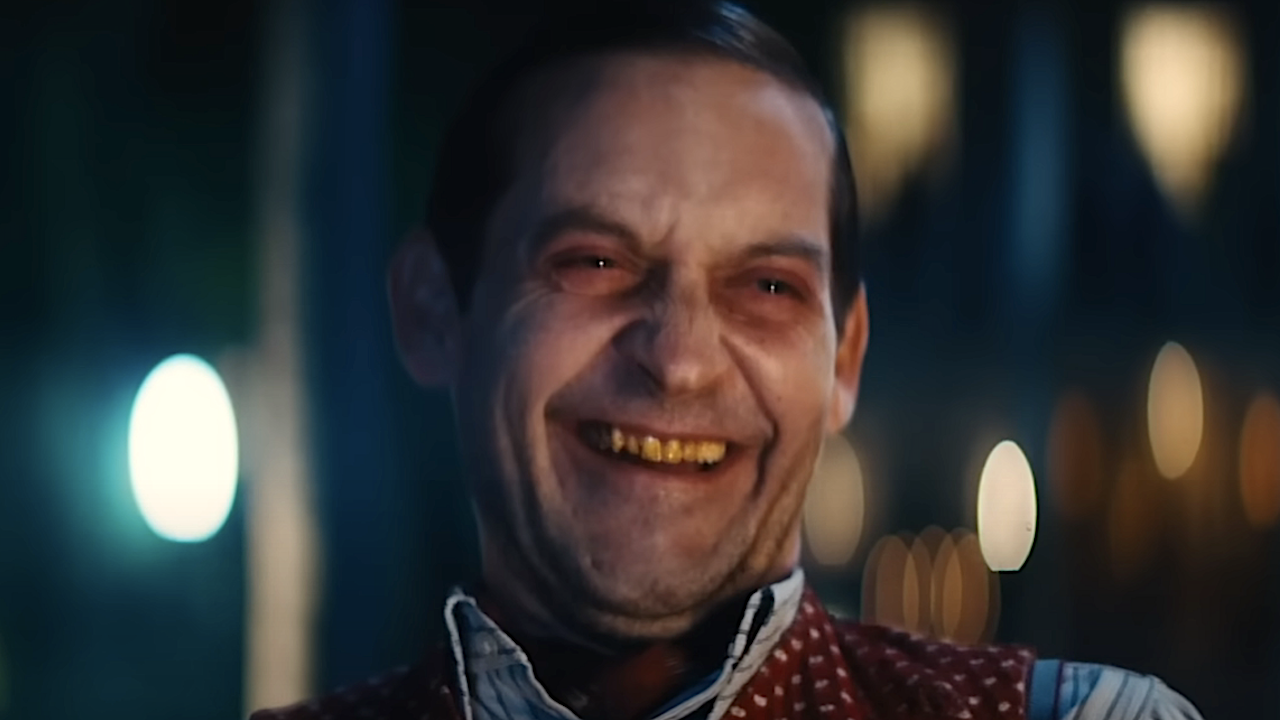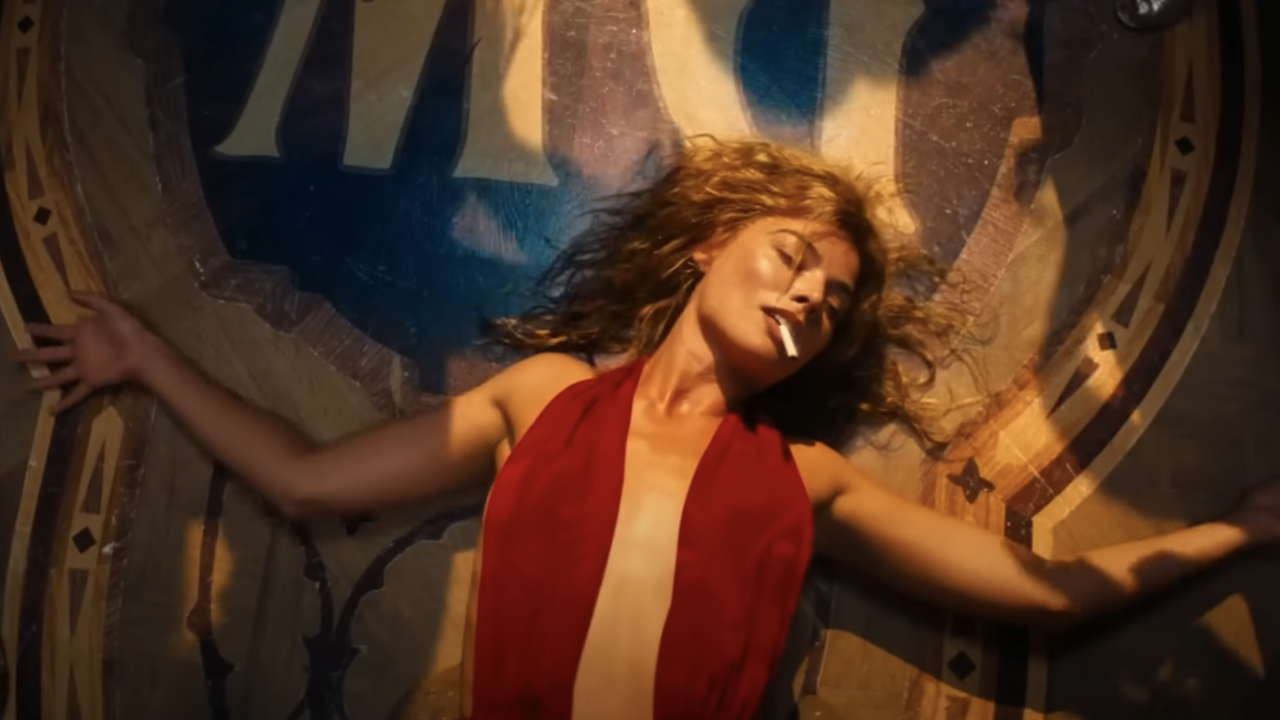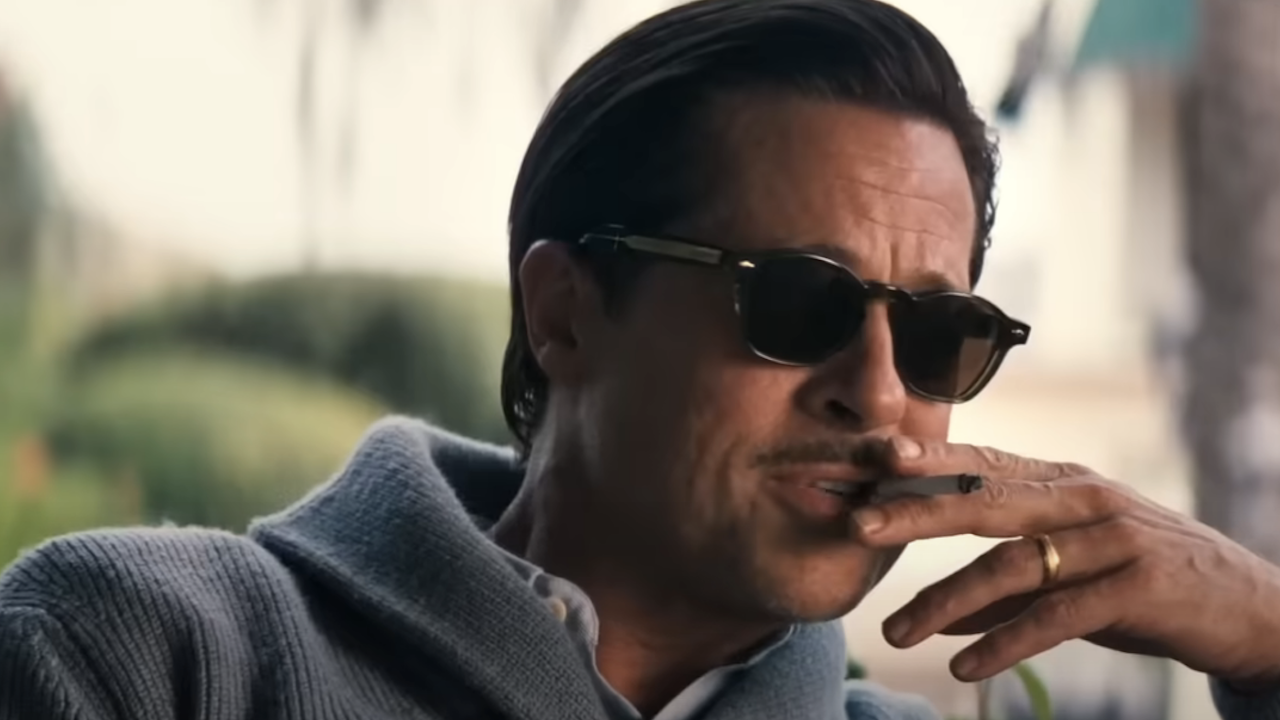Does The Babylon Ending Work? Let’s Talk It Out
What happens to Brad Pitt and Margot Robbie... and Hollywood, in general?

The following feature is going to analyze the ending sequence of Damien Chazelle’s new movie Babylon, so if you haven’t yet seen the movie… first off, go. And then come back and read my opinion on whether or not the choice he made in the finale worked. Spoilers ahead!
As much as Damien Chazelle’s masterful Babylon is about Hollywood in the 1920s, as the industry dealt with the difficult transition from silent film to the “Talkies,” the screenplay also includes contemporary commentary about legacy and innovation in the modern cinematic age. The obstacles that were facing a fading movie star such as Jack Conrad (Brad Pitt) or a sizzling starlet like Nellie LaRoy (Margot Robbie) could be applied to celebrities under the microscope of fame to this day. And the way that Chazelle chose to end Babylon proves that he wanted this movie to make a bridge from the past to the present, while looking toward the future.
The reviews for Babylon have been mixed. While most critics are praising the work done by the movie’s all-star cast, there have been remarks made that the movie has very little to say amidst its chaos and debauchery. The claim might be that Chazelle staged an epic, Great Gatsby-level party, but left out the reason for celebrating. But I don’t think you can watch the movie’s ending sequence without understanding how the writer-director was using his experimental ending to cement the fact that everything old is still new, and that despite the setting, Babylon is about the here and now for Hollywood. Here’s what happened at the end of Babylon, and my take on whether it worked or not.

What Happens At The End Of Babylon?
By the end of Babylon, the movie’s two main characters – Jack Conrad and Nellie LaRoy – had died. Conrad took his own life once he realized that the harsh truth passed down to him by gossip columnist Elinor St. John (Jean Smart) was, in fact, true. She explained to him that fame is fleeting, and that his time as an influential movie star had simply passed. But there was nothing to be ashamed of, for Conrad – like most A-list celebrities – had left a stamp on the industry that would outlive him. LaRoy’s fate is less clear, but no less tragic. Finding herself in extreme debt to dangerous men, LaRoy agrees to flee to Mexico with her lover, Manny Torres (Diego Calva). But before they can leave town, LaRoy changes her mind, and wanders away into the night. We learn, via a newspaper clipping, that she was found dead in a hotel room. She was 34 years old.
The movie ends with a flash forward to the 1950s. Torres survived the exploits of Babylon, and moved to New York where he started a family. But the movie catches back up with Manny as he brings his wife and kids on a vacation to Los Angeles, and to the entrance of the Kinoscope Studios, where he made his mark. The family’s disinterested with this chapter of Manny’s career, so they head back to their hotel while he decides to see Singing in the Rain at a nearby cinema. The movie – which influenced Chazelle’s La La Land as well – comments on Hollywood’s difficult transition from silent to sound, and as he watches, Torres reflects on the stories he lived that mirror the scenes he’s witnessing on the screen.
But it doesn’t stop there. While Torres is playing “audience member,” Chazelle chooses to include an unexpected montage. With Torres in the crowd, and moviegoers enjoying Singing In The Rain, the movie begins to recycle shots from Babylon – the movie we just sat through – and transition further into the movies that exist in its wake. Manny’s memories of his own Hollywood journey merge with famous scenes from Hollywood’s history. Chaplin. Georges Méliès. The Wizard of Oz. Ben-Hur. 2001: A Space Odyssey. Jurassic Park and Raiders of the Lost Ark. By attempting to include as many groundbreaking moments in the montage, Chazelle goes so far as to feature shots from both Terminator 2 and Avatar, paying homage to the genius of James Cameron. The list goes on.
This beautiful and bold montage culminates in what appears to be colorful shots of the chemical reactions that occur when one develops film. It’s an imperfect science, shooting on film, and the images that you capture might not be exactly what you had intended. But they’re forever committed to celluloid, leaving behind a legacy. It’s the point of Chazelle’s entire movie, and that’s why I think the next section is worth exploring.
Your Daily Blend of Entertainment News

Does The Babylon Ending Work?
Absolutely, this ending works. Anyone who finds fault in the ending misses the point of the story. Yes, it’s set in the 1920s. But the ultimate commentary is that the people who were doing everything that we witnessed on screen in Babylon – from the partying to the professional challenges – were doing it so that their actions could and would be immortalized on film. In an early scene from Babylon that gets repeated in the end, Manny tells Nellie that he wants to be part of something bigger, something that lasts. He wants to be part of something that MEANS something. Chazelle is saying that contributing to the art form of film, on any level, immortalizes you.
Think back to the brilliant speech that Elinor St. John gives to Jack Conrad after she writes an unflattering cover story about his fading celebrity. His time at the top of the Hollywood heap had ended. That was true. But she also told him that any time one of his films was run through a projector, the actor would come back to “life” and be appreciated by people who hadn’t yet been born. He’d leave behind a legacy that would still move audience members – like Manny – to tears decades later.
In fact, the look that is expressed on Diego Calva’s face during this montage speaks to an even larger point proven by Babylon. It suggests that he doesn’t even realize the impact that their work was going to have until he distanced himself from it. When you are making movies, you are so immersed in the pressure of the day-to-day insanity that you can’t appreciate the longevity of what’s being filmed. It might not always be positive. Jack (Pitt) does sneak into a theater to hear an audience laugh at what he thought was a dramatic performance. But sitting in the theater, with tears streaming down his cheeks, Calva’s reaction seems to be saying that everything they endured was all worth it, because technically, they are going to live forever.

What Damien Chazelle Has To Say About It
The crazy thing about this ending is that Damien Chazelle told the ReelBlend podcast it wasn’t his intended ending, and that it came about very late in the process thanks to some experimental editing. According to Chazelle, they had completed their recordings with the orchestra and were well into their final mix on the film before he finally had to admit that his ending was missing something that he couldn’t put his finger on. In his own words, the ending they’d had was “too normal,” given all of the crazy sequences his audience had just seen in Babylon. So, he began to tweak.
As Chazelle put it:
It's not a movie that wants to be normal, in any capacity. It wants to be a little crazy. And so it had to end in a way that was a little crazy, or a little outside the norm. And so we just started experimenting. And then once we had this sort of basic thing, then we got very excited by the idea. But we had to actually figure out a way to practically make it a reality. Clearing that many clips in that short amount of time, and figuring out (that we) also we had to go back and redo new orchestra sessions to get new music in. All of it wound up being this sort of mad dash, but we knew it had to be done. And luckily, the studio was supportive. Even though the ending sequence definitely freaked out some people on the team, everyone agreed that the movie needed one more wild swing at the end, that the big swing of a movie demanded a big swing of an ending. So they got on board with the spirit of it and that helped us get it, get it done.
As mentioned above, this meant including scenes of the raptors from the first Jurassic Park, and a clip from the original Avatar – even as Babylon is playing in theaters opposite James Cameron’s sequel Avatar: The Way of Water. It’s jarring. But it’s appropriate. And it’s the ideal way to end an ambitious homage to Hollywood, and its neverending legacy.

Sean O’Connell is a journalist and CinemaBlend’s Managing Editor. Having been with the site since 2011, Sean interviewed myriad directors, actors and producers, and created ReelBlend, which he proudly cohosts with Jake Hamilton and Kevin McCarthy. And he's the author of RELEASE THE SNYDER CUT, the Spider-Man history book WITH GREAT POWER, and an upcoming book about Bruce Willis.
